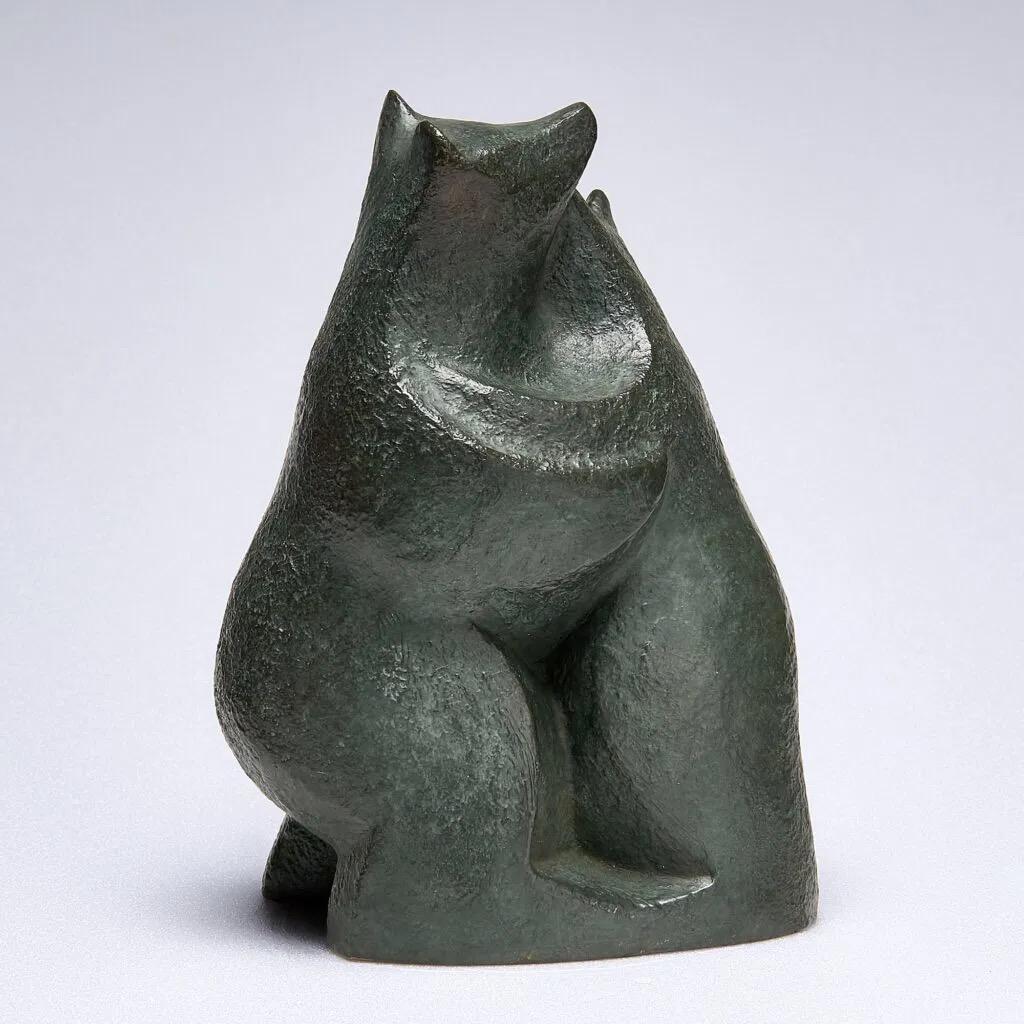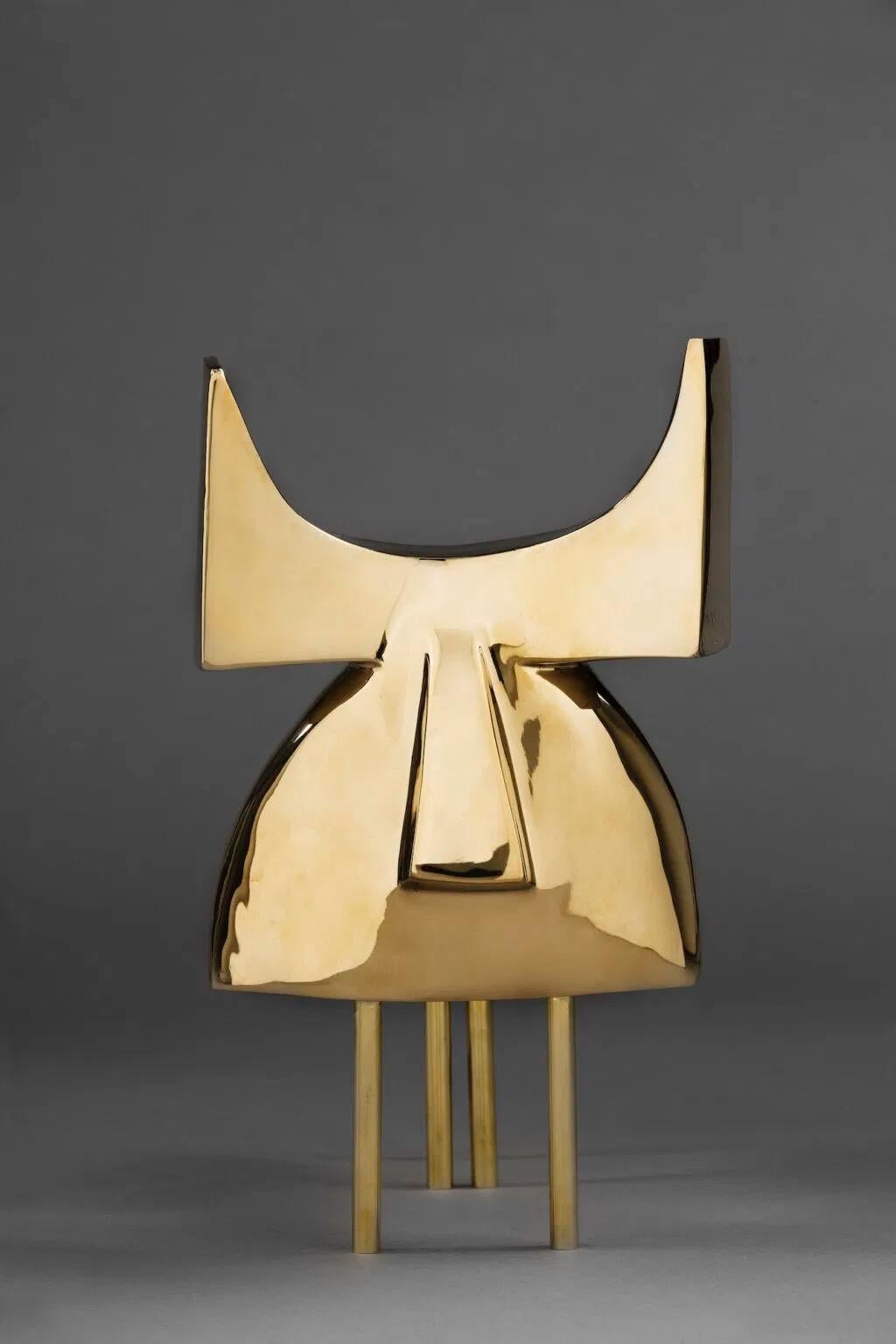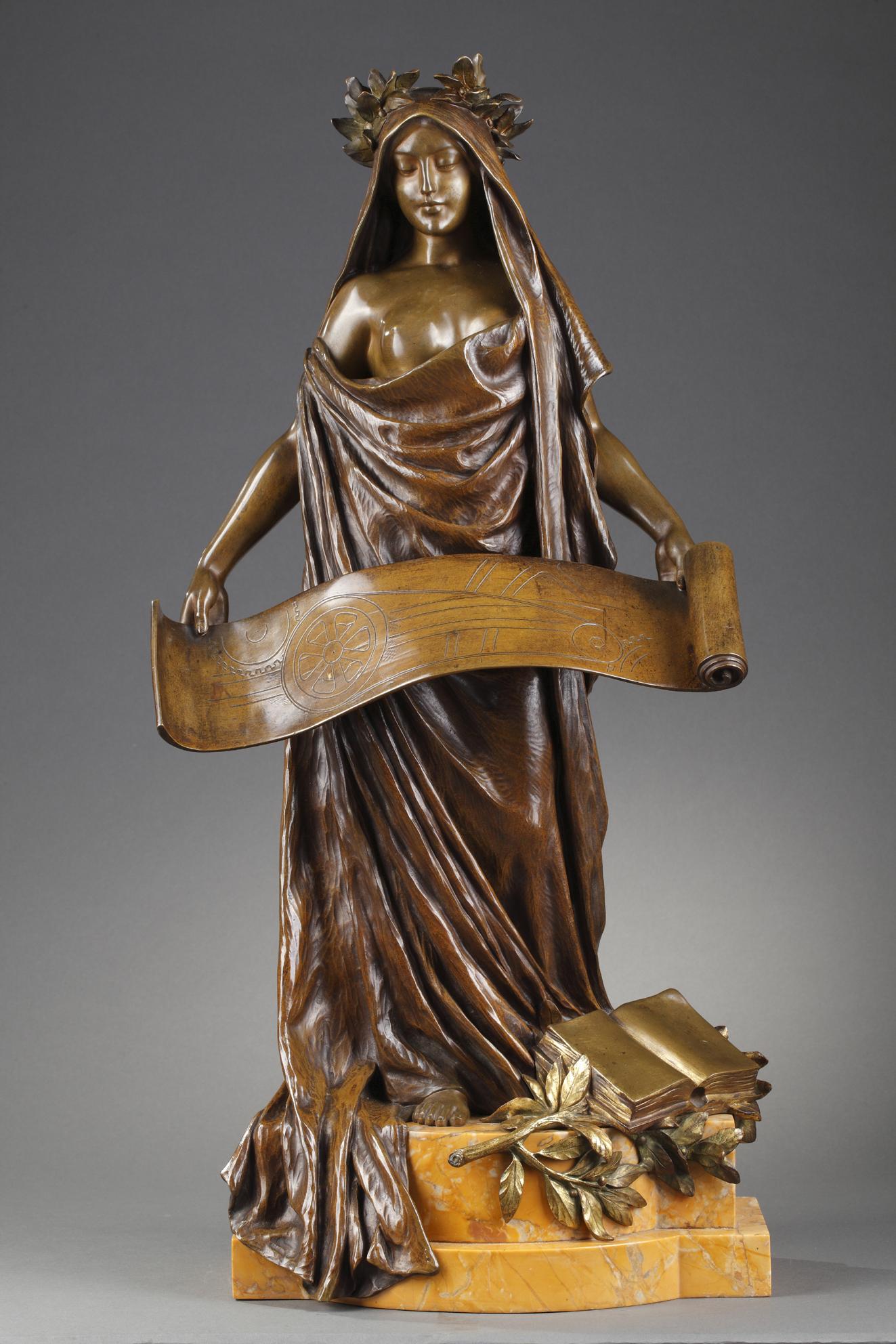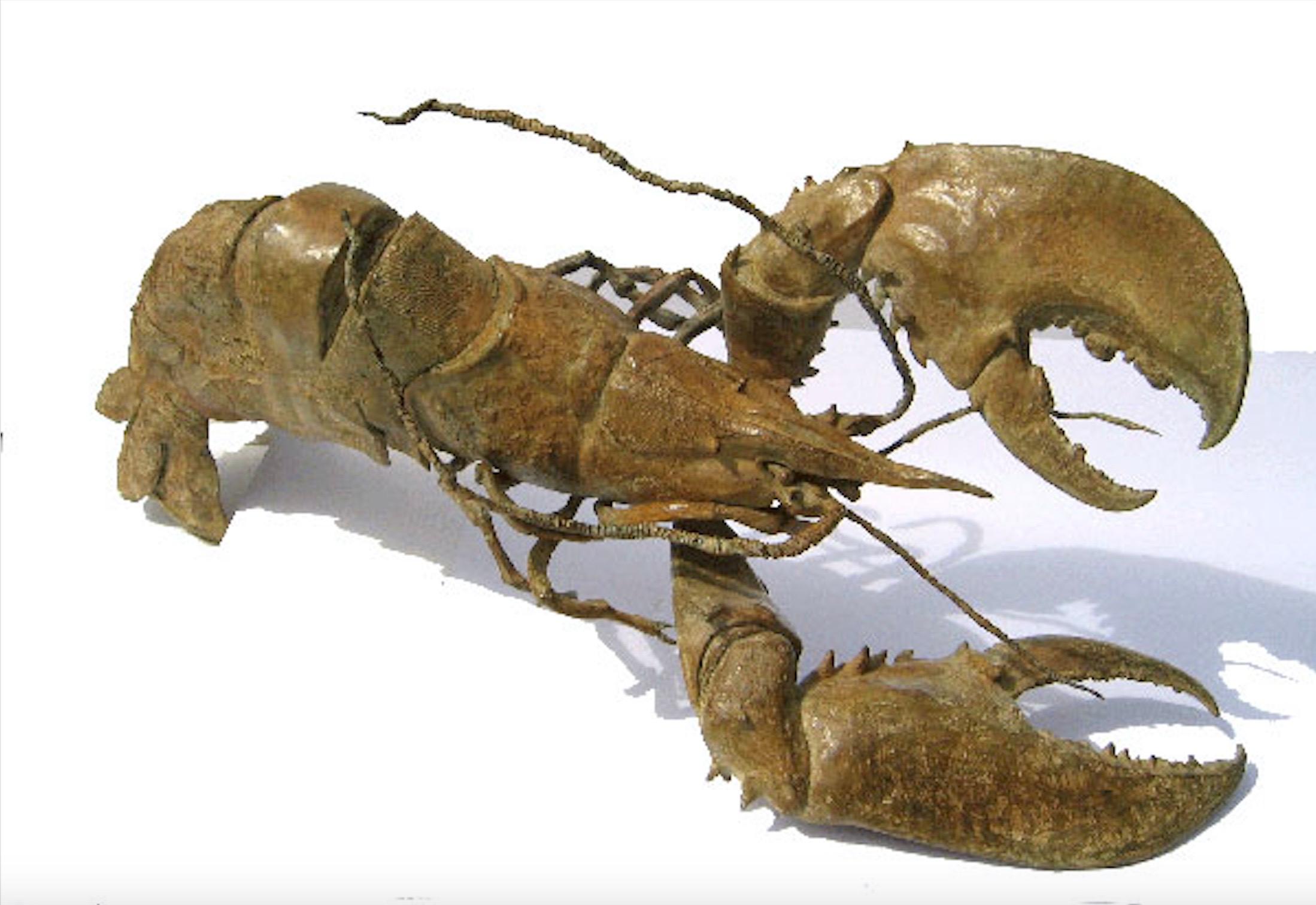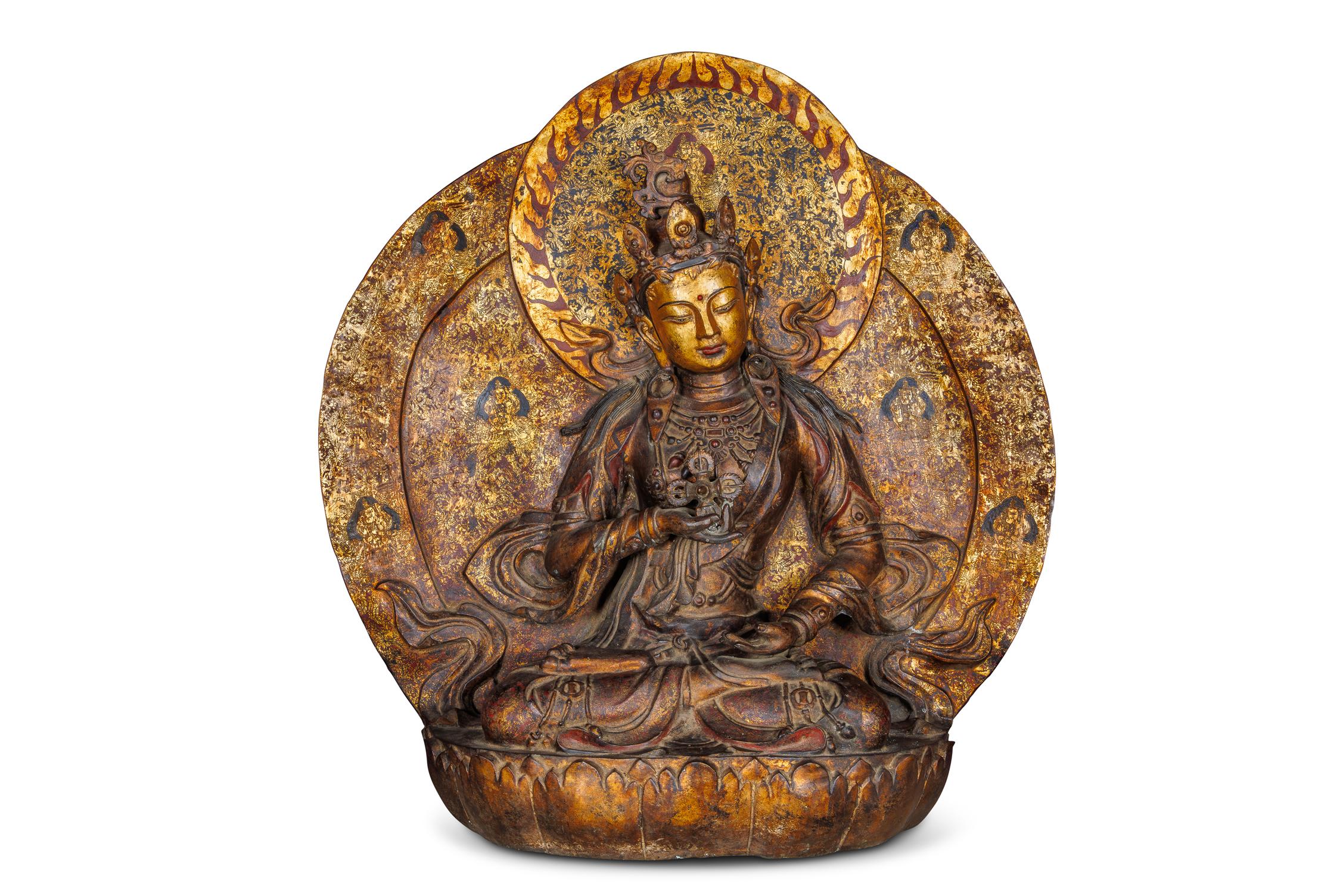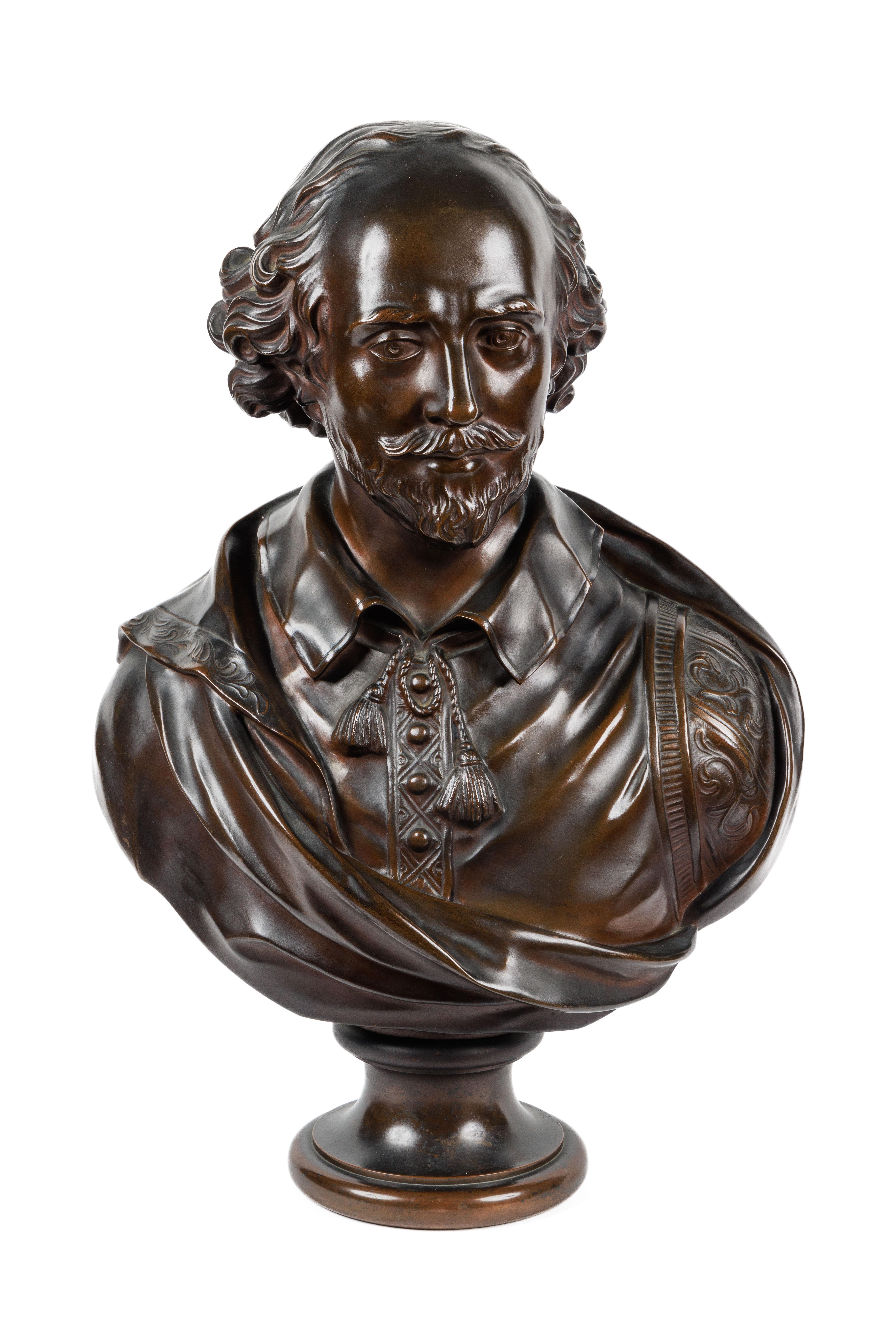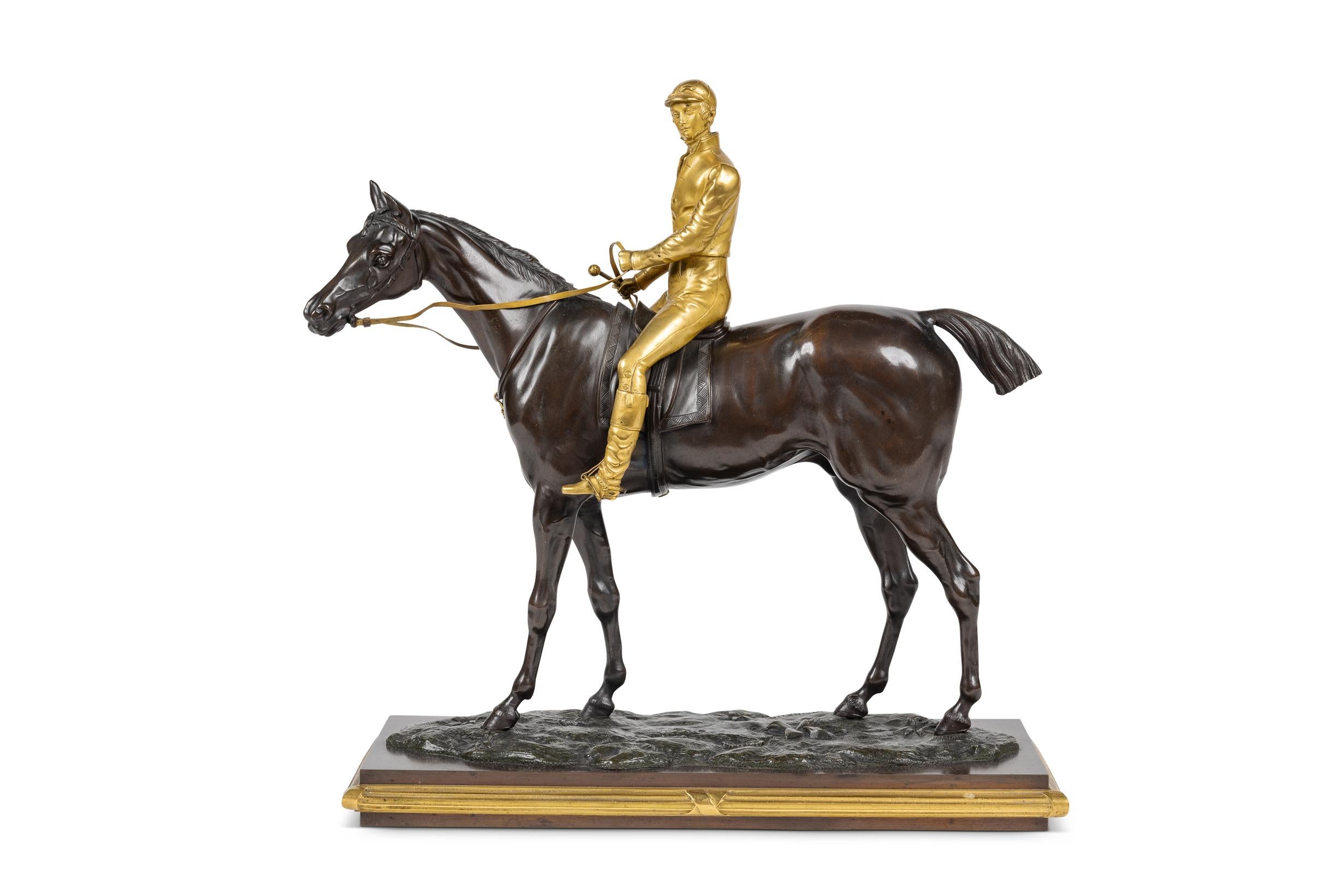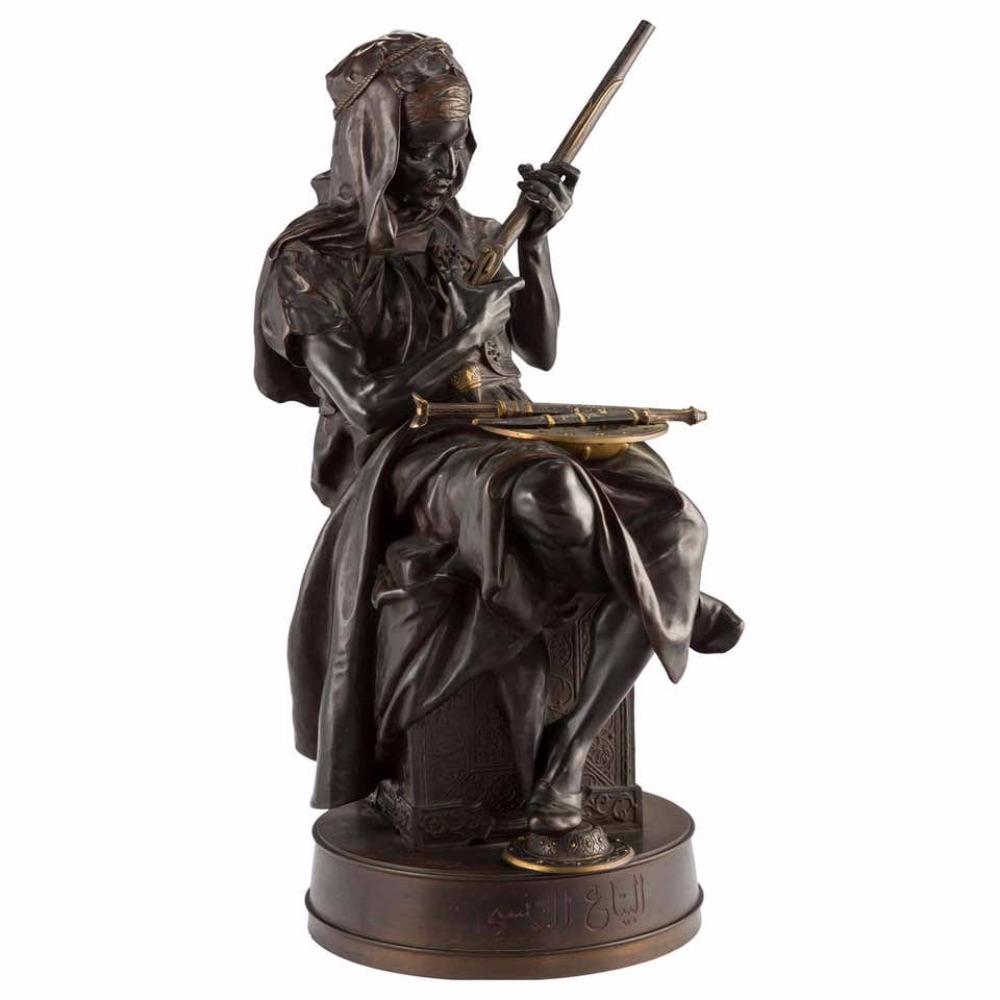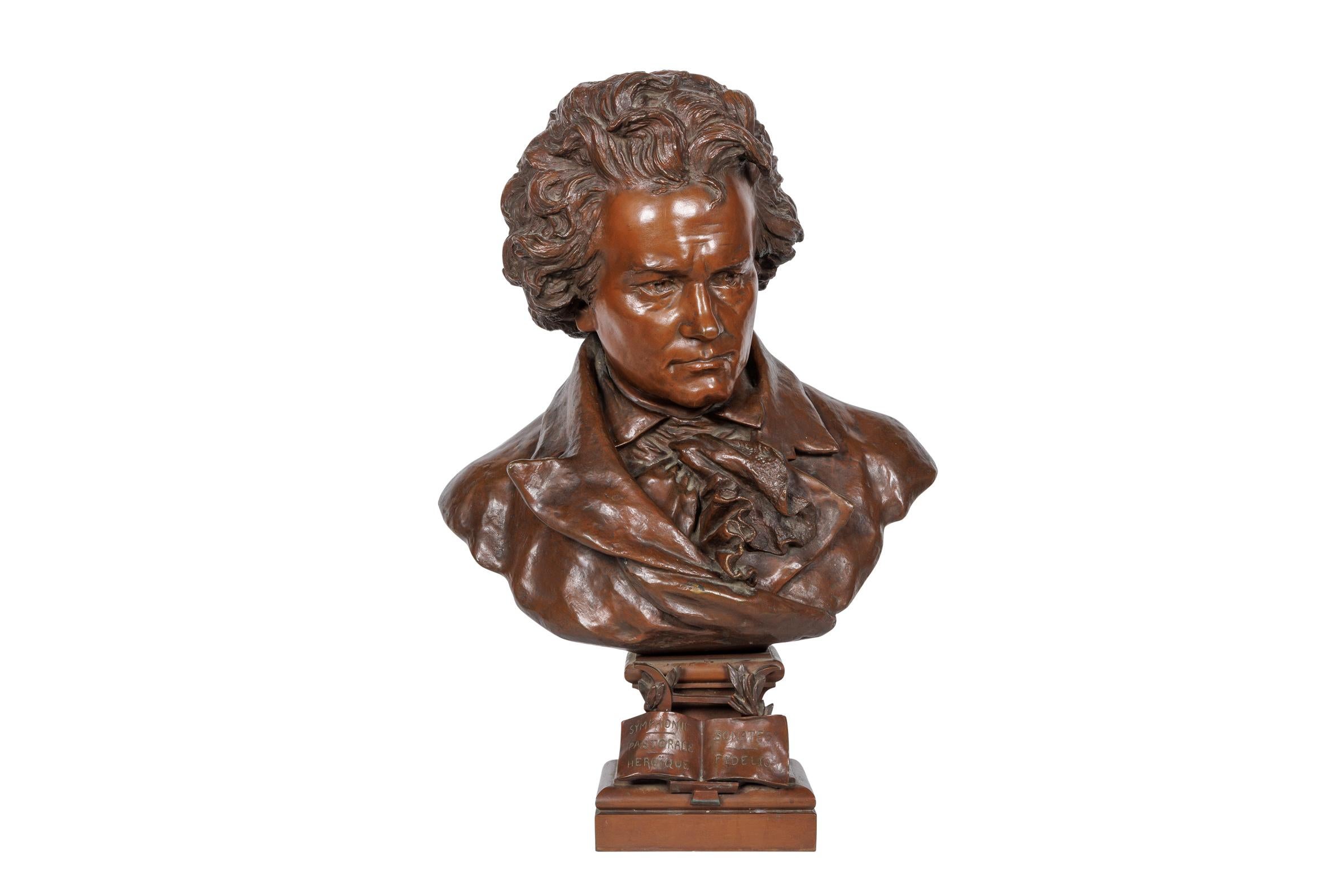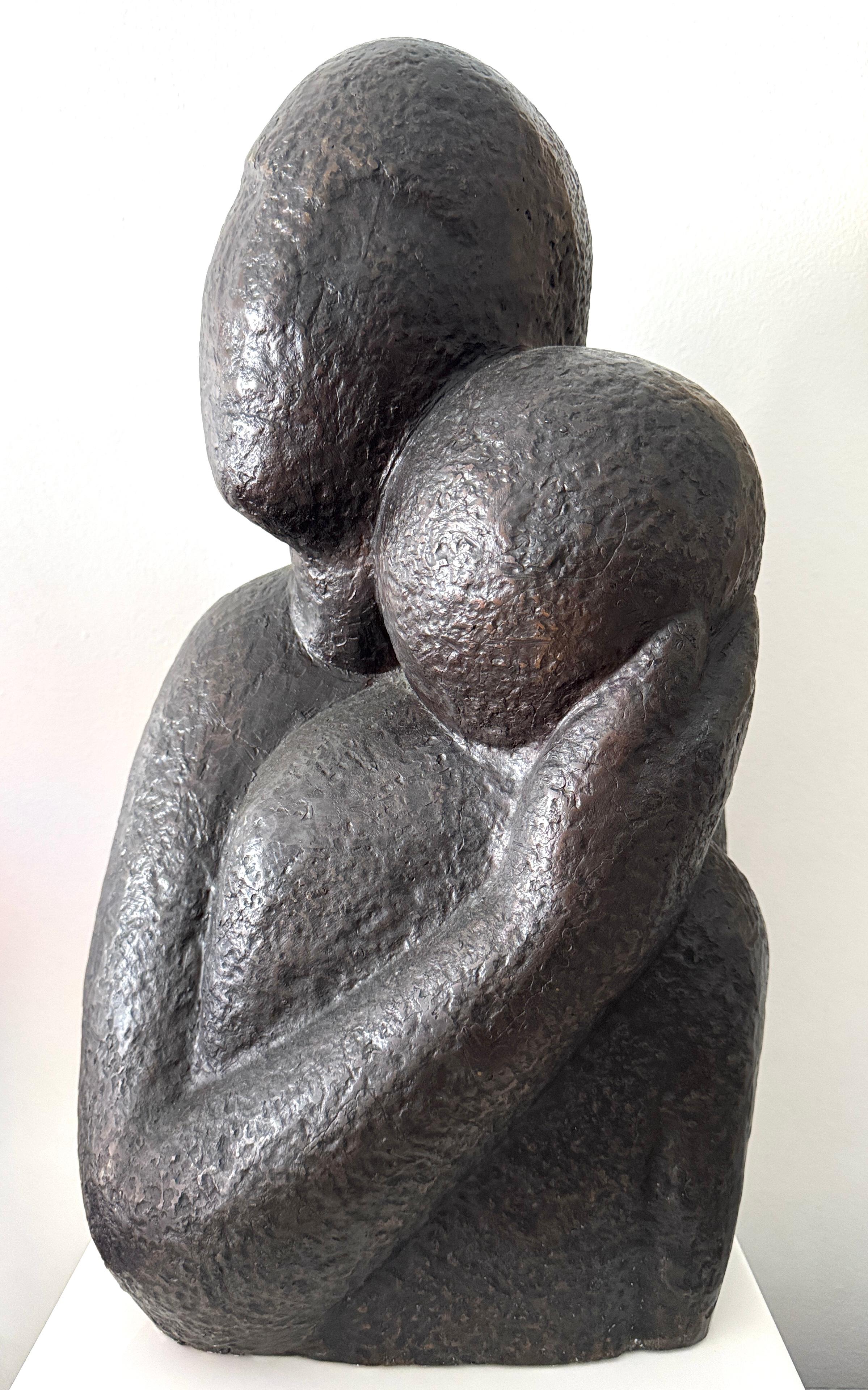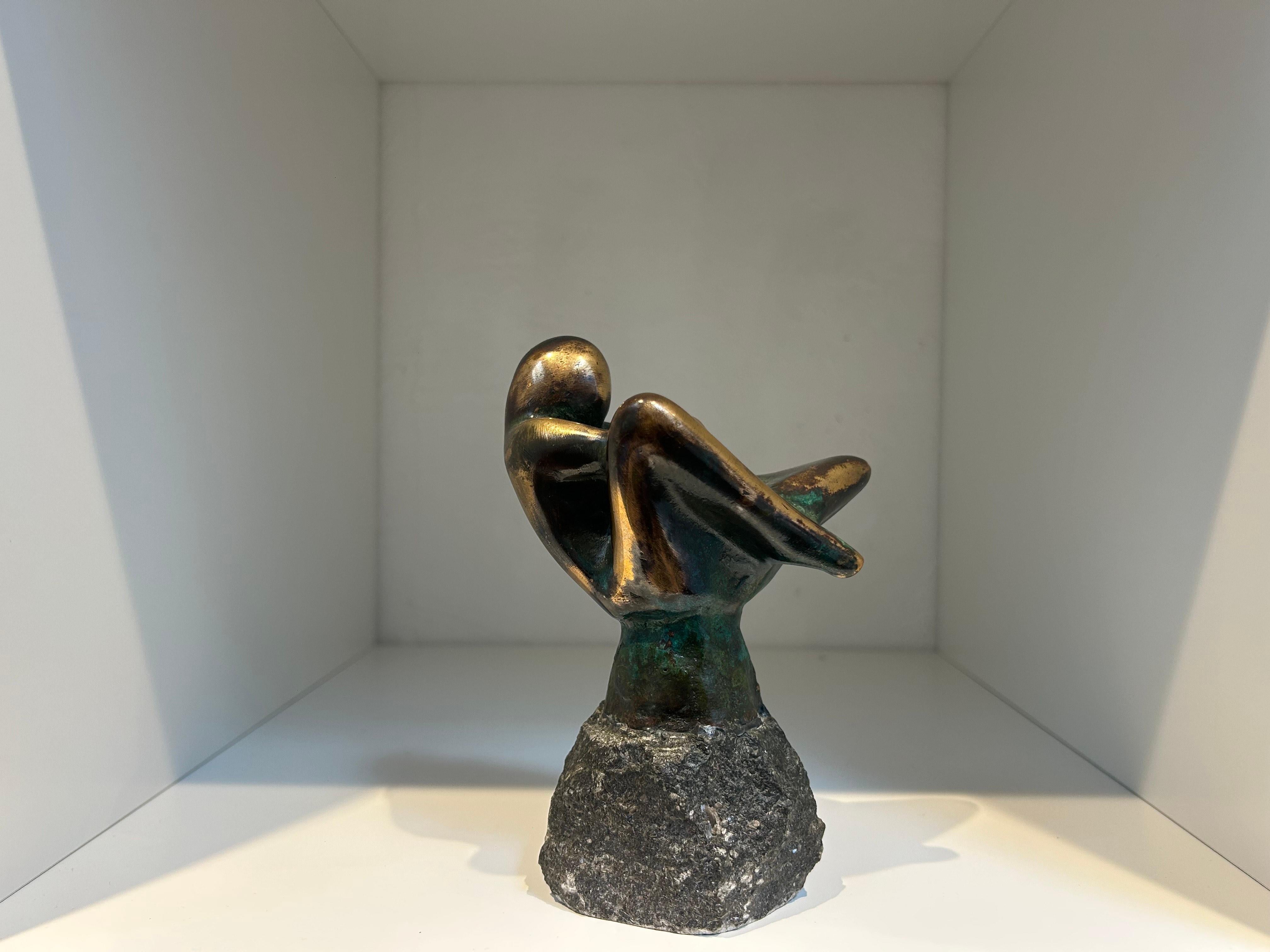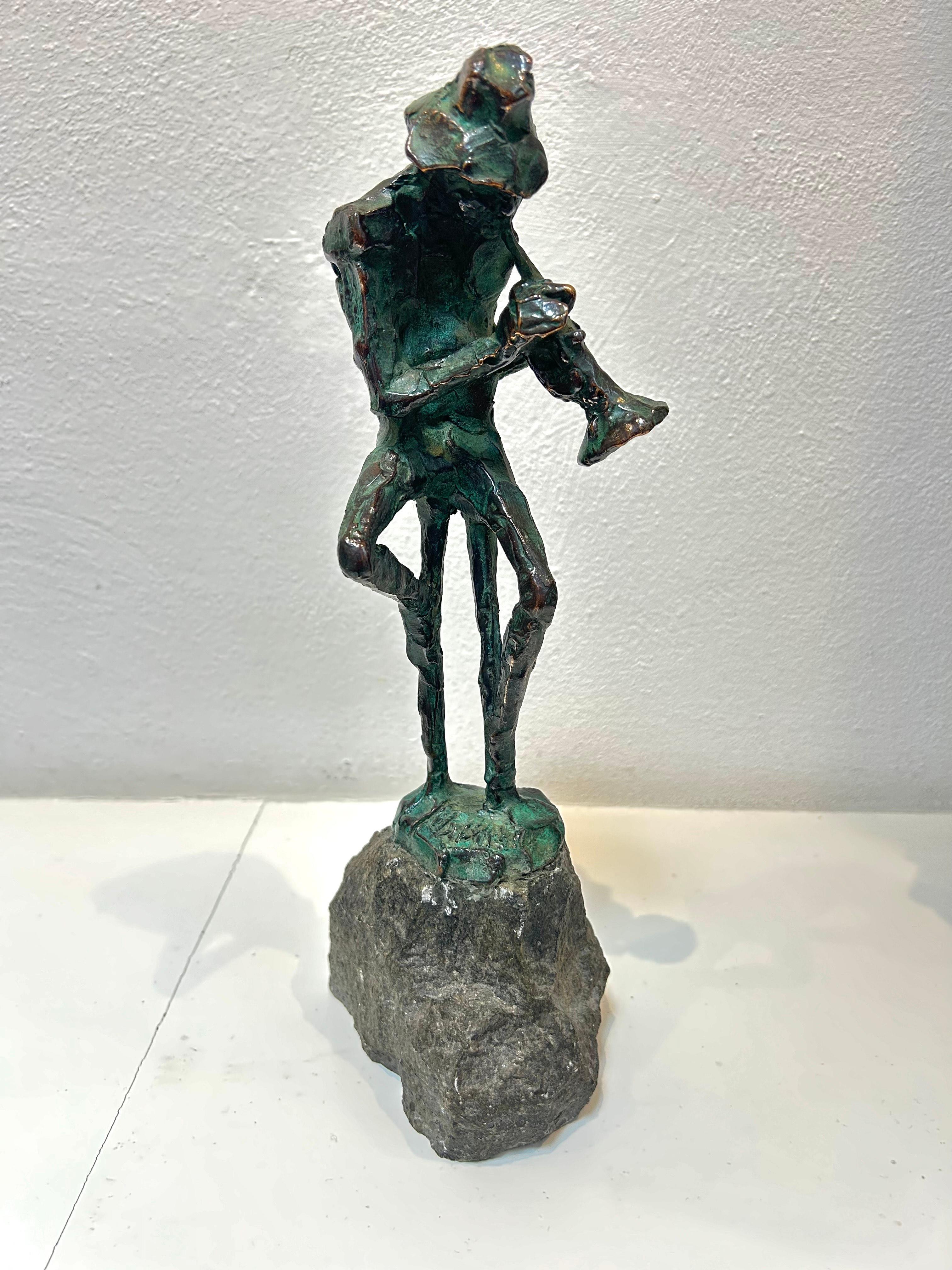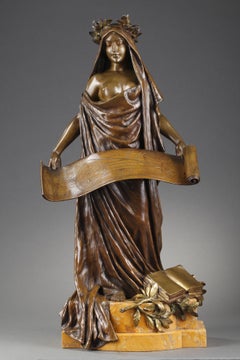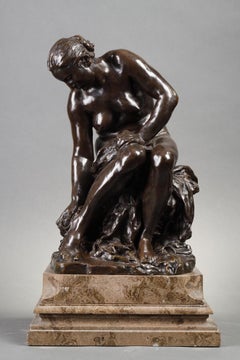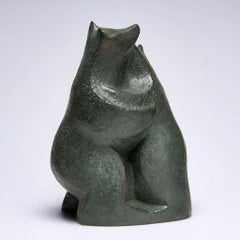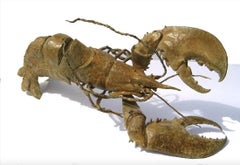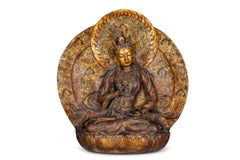Young girl from Bou-Saada, bronze female sculpture
View Similar Items
Want more images or videos?
Request additional images or videos from the seller
1 of 18
Louis Ernest BarriasYoung girl from Bou-Saada, bronze female sculpture1893
1893
Price:$37,265.99
$45,529.46List Price
About the Item
- Creator:Louis Ernest Barrias (1841 - 1905, French)
- Creation Year:1893
- Dimensions:Height: 15.16 in (38.5 cm)Width: 13.19 in (33.5 cm)Depth: 13.19 in (33.5 cm)
- Medium:
- Period:
- Condition:
- Gallery Location:PARIS, FR
- Reference Number:Seller: N.77091stDibs: LU2514212354032
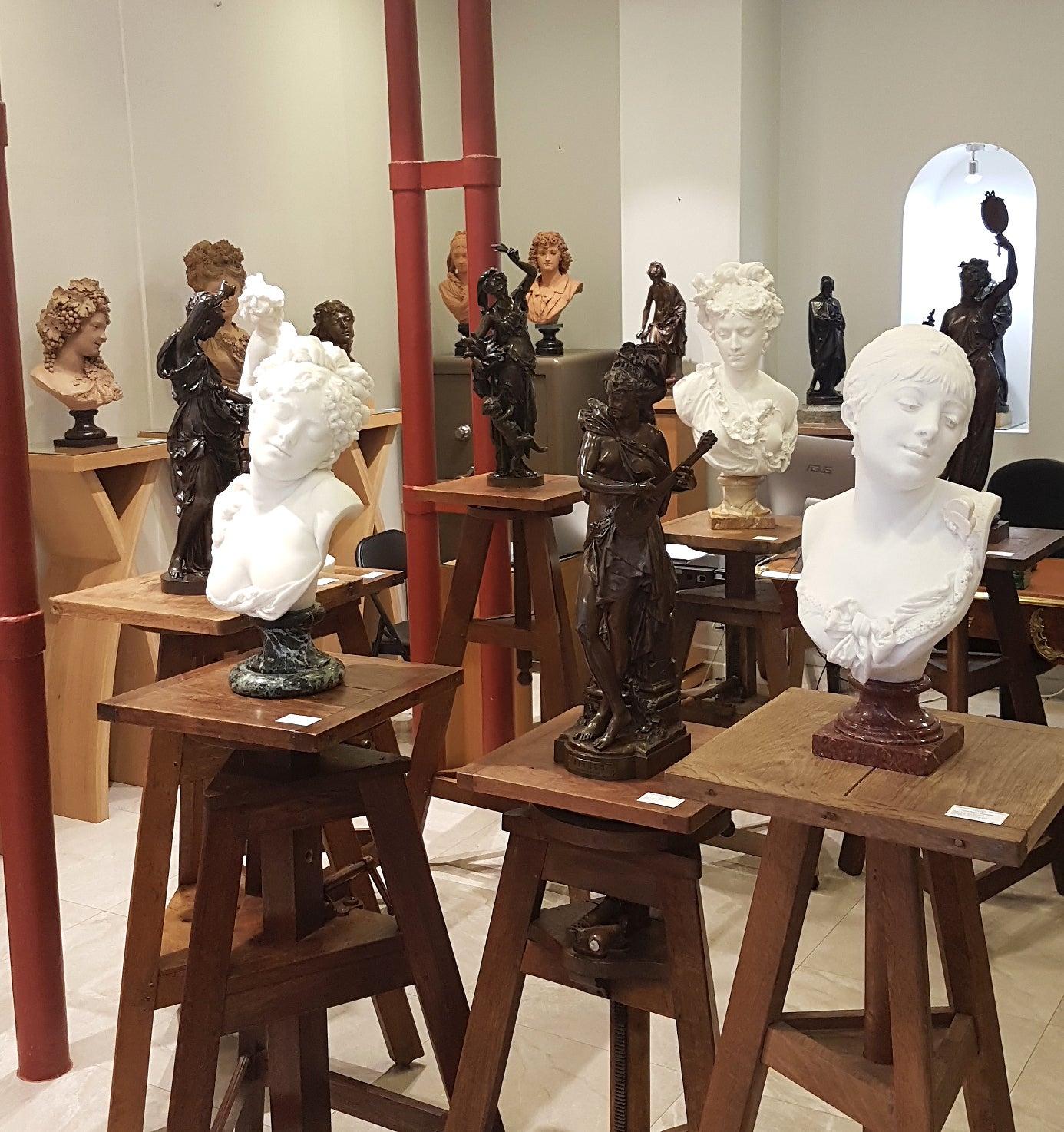
About the Seller
5.0
Recognized Seller
These prestigious sellers are industry leaders and represent the highest echelon for item quality and design.
Established in 1992
1stDibs seller since 2023
8 sales on 1stDibs
Typical response time: 8 hours
Authenticity Guarantee
In the unlikely event there’s an issue with an item’s authenticity, contact us within 1 year for a full refund. DetailsMoney-Back Guarantee
If your item is not as described, is damaged in transit, or does not arrive, contact us within 7 days for a full refund. Details24-Hour Cancellation
You have a 24-hour grace period in which to reconsider your purchase, with no questions asked.Vetted Professional Sellers
Our world-class sellers must adhere to strict standards for service and quality, maintaining the integrity of our listings.Price-Match Guarantee
If you find that a seller listed the same item for a lower price elsewhere, we’ll match it.Trusted Global Delivery
Our best-in-class carrier network provides specialized shipping options worldwide, including custom delivery.More From This Seller
View AllAllegory of Progress
By Louis Chalon
Located in PARIS, FR
Allegory of Progress
by Louis CHALON (1866-1940)
Bronze with dual patina
Raised on a yellow Siena marble base
Signed on the side of the base " L. Chalon "
Old period cast
France
ci...
Category
Early 1900s Art Nouveau Figurative Sculptures
Materials
Bronze
Half-blood Horse, head raised
By Antoine-Louis Barye
Located in PARIS, FR
Half-blood Horse, head raised
by Antoine-Louis BARYE (1796-1875)
A bronze sculpture with a dark brown patina
Signed on the base " Barye "
Cast by " F. Barbedienne fondeur " (with th...
Category
Late 19th Century French School Figurative Sculptures
Materials
Bronze
Suzanne
By Aimé-Jules Dalou
Located in PARIS, FR
Bathing woman drying her right foot
also known as "Suzanne"
by Aimé-Jules DALOU (1838-1902)
A bronze sculpture with a nuanced dark brown patina
Signed on the base " Dalou "
A very...
Category
Early 20th Century French School Figurative Sculptures
Materials
Bronze
Standing Bull, head bowed
By Isidore Jules Bonheur
Located in PARIS, FR
Standing Bull, head bowed
by Isidore BONHEUR (1827-1901)
A bronze sculpture with a nuanced dark brown patina
Signed on the base " I. Bonheur "
A period cast by " Peyrol " (with the...
Category
Late 19th Century French School Figurative Sculptures
Materials
Bronze
Pair of bookends with Elephants
By Ary Bitter
Located in PARIS, FR
Pair of bookends with Elephants
by Ary BITTER (1883-1973)
Pair of bronze sculptures with a nuanced greenish light brown patina
Raised on their original veneered amaranth burl bases
...
Category
1930s Art Deco Figurative Sculptures
Materials
Bronze
Hay Baler
By Aimé-Jules Dalou
Located in PARIS, FR
This Hay baler is a subject that is included in the famous suite commonly called "little workers" by Jules Dalou (1838-1902)
Bronze with dark brown patina
c...
Category
Late 19th Century French School Figurative Sculptures
Materials
Bronze
You May Also Like
Tenderness by Eric Valat - Bronze sculpture of two bears hugging, animal
By Eric Valat
Located in Paris, FR
Bronze sculpture, inches 6.69 x 5.11 x 3.93 / 17 × 13 × 10 cm.
Straight out of childhood, the bear appears in Eric Valat’s bestiary sculptural vocabulary. The sculpture shows an ela...
Category
2010s Contemporary Figurative Sculptures
Materials
Bronze
Pablo by Marie Louise Sorbac - bronze sculpture of a bull, geometric
By Marie Louise Sorbac
Located in Paris, FR
Pablo is a bronze sculpture by French contemporary artist Marie Louise Sorbac, dimensions are 31 × 18 × 25 cm (12.2 × 7.1 × 9.8 in).
The sculpture is signed and numbered, it is part...
Category
2010s Contemporary Figurative Sculptures
Materials
Bronze
Lobster in Armour by Chésade - Bronze sculpture, sea life, animal art, realistic
By Chésade
Located in Paris, FR
Lobster in Armour is a unique bronze sculpture by contemporary artist Chésade, dimensions are 33 × 89 × 42 cm (13 × 35 × 16.5 in).
The sculpture is signed and comes with a metal sta...
Category
2010s Contemporary Figurative Sculptures
Materials
Bronze
A Monumental Gilt-Lacquered Bronze Ornamental Sculpture of Vajravidarana
Located in Queens, NY
A Monumental Gilt-Lacquered Bronze Ornamental Buddha Sculpture of Vajravidarana:
A Masterpiece of Sino-Tibetan Craftsmanship, Late 19th Century, Qing Dynasty
This monumental gilt-lacquered bronze ornamental sculpture of Vajravidarana is an extraordinary and commanding piece of art, showcasing the pinnacle of Sino-Tibetan craftsmanship from the late 19th century. The figure of Vajravidarana, a powerful purification deity in Tibetan Buddhism, is meticulously sculpted to embody both spiritual authority and artistic excellence.
Vajravidarana is primarily known for his role in removing spiritual impurities and negativities. Unlike other deities associated with wisdom or compassion, Vajravidarana’s function is centered on purification and healing. He is typically depicted holding a vajra and a bell, symbolizing the cutting away of delusions and the resonance of divine truth. In this striking sculpture, Vajravidarana is shown holding a vishva vajra (the double vajra), a unique and powerful variation of the traditional iconography, which signifies ultimate protection and the dispelling of negative karma.
Vajravidarana: The Supreme Purifier and Protector
Vajravidarana is revered in Tibetan Buddhism as the deity of spiritual purification, called upon to cleanse practitioners of defilements and negative influences. His vajra represents the indestructibility of truth, while his bell signifies the wisdom that resonates through purification rituals. In this sculpture, the presence of the vishva vajra, or double vajra, enhances his association with supreme protection, ensuring the destruction of all spiritual obstacles and afflictions.
The figure’s powerful yet composed expression conveys a sense of unwavering resolve and divine authority. His posture, along with the carefully sculpted details of his robes and ornaments, highlights his function as a guardian against impurity. The inclusion of the vishva vajra rather than the usual single vajra reinforces his role as a supreme protector, capable of dispelling all forms of negativity and restoring balance.
Symbolism of the Mantras and Aureole:
Unlike deities that embody wisdom through duality, Vajravidarana’s iconography is centered on purification and exorcism. The aureole surrounding him is inscribed with sacred purification mantras rather than depictions of a consort. These mantras emphasize his function as a remover of obstacles and impurities, reinforcing his role in Buddhist healing rituals.
The presence of the sacred inscriptions elevates the sculpture’s spiritual significance, making it a focal point for meditation and ritual purification. Practitioners often visualize Vajravidarana radiating purifying light, dissolving afflictions and negative karma. This theme is mirrored in the sculptural repetition of the purification symbols on the aureole, reinforcing the deity’s role as a divine cleanser.
Gilt-Lacquered Bronze: The Artistry of Sino-Tibetan Metalwork:
The craftsmanship of this monumental figure reflects the expertise of late 19th-century Sino-Tibetan metalwork, where traditional Tibetan themes were infused with Chinese artistic sensibilities. Cast in bronze and finished with a rich gilt lacquer, the statue has an otherworldly glow, giving it an ethereal, almost divine presence. The gilding process—applied with exceptional skill—gives the sculpture a striking luminosity that enhances the fine details of the facial features, flowing robes, jewelry, and other elements of the deity’s attire.
The technique employed to create this figure speaks to the high level of craftsmanship that flourished during the late Qing Dynasty and early modern Tibetan art. The ornate details of the robes and the fine texture of the sculpture highlight the exceptional skill of the artisans who brought this work to life. The use of gold and lacquer not only reflects the preciousness of the sculpture but also its spiritual significance as an object meant to inspire reverence and meditation.
An Ornamental Sculpture of Monumental Scale:
Unlike smaller devotional objects, this sculpture is designed as an ornamental masterpiece, intended to make a grand visual and spiritual statement. Its monumental size allows it to dominate any space, offering a commanding presence that is both physically and symbolically impressive. In Buddhist practice, large sculptures of this nature are often placed in temples or meditation halls, where their imposing size and serene presence would encourage contemplation and devotion.
The grand scale of the statue further amplifies the spiritual power it is meant to convey. As a representation of Vajravidarana, it is not only a physical object of beauty but also a conduit for meditation, purification, and enlightenment. The scale of the sculpture also emphasizes the divine stature of the deity, highlighting his importance in the Buddhist tradition as the ultimate force for spiritual cleansing and protection.
Provenance:
Acquired in China in circa 1900
1905 Private Buddhist Temple, Northeast, USA
Private Sale
Solomon Treasure...
Category
19th Century Figurative Sculptures
Materials
Bronze
A Monumental French Patinated Bronze Bust of William Shakespeare, after Houdon
By F. Barbedienne Foundry
Located in Queens, NY
A Monumental French Patinated Bronze Bust of William Shakespeare, after Houdon, by F. Barbedienne Foundry, circa 1870.
Masterfully and realistically sculpted in solid bronze, this b...
Category
19th Century Figurative Sculptures
Materials
Bronze
A Rare Gilt and Patinated Bronze Jockey on A Horse, circa 1875
By Isidore Jules Bonheur
Located in Queens, NY
Isidore-Jules Bonheur (French, 1827–1901)
A Rare Gilt and Patinated Bronze Jockey on A Horse, circa 1875.
Introducing a truly exceptional and highly so...
Category
19th Century Figurative Sculptures
Materials
Bronze
$14,850 Sale Price
44% Off
